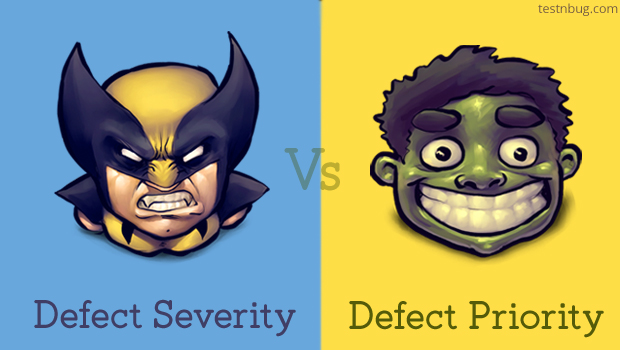‘Severity’ and ‘Priority’ of a defect is a commonly asked question. Which is actually, a tricky one. In this post we will discuss about these terms to get a clear view.
If you have missed about Defect life cycle, Click here ‘Dr.Buggy’, as this is a prerequisite for this post.
Defect Severity
Defect Severity is used to determine the impact of the Defect on the application. It’s like the effect of defect on the application.
Severity is defined by the Software Tester which ranges from Showstopper defect to Cosmetic defect.
seriousness of a defect
- Showstopper – The most serious concern like a system crash, Corrupted data etc.
- Critical – A significant concern (broken functionality without a workaround).
- Major – A concern due to broken functionality but has a Workaround.
- Minor – A lesser concern (broken functionality with a workaround).
- Trivial – An insignificant concern (cosmetic).
Defect Priority:
Defect priority is used to signify the level of urgency of fixing the defect. Its like how soon the defect has to be fixed.
Priority may be initially set by Tester, and is finalized by the Project/Tech Manager. It ranges from Urgent to Low.
Importance of the Defect
- Urgent – Highly visible and/or stops all project efforts
- High – Stops some project efforts (and no workaround exists)
- Medium – Slows project efforts (but a workaround exists)
- Low – Barely visible and/or does not affect project efforts
Categories
The defect is categorized into any one of the following, before it goes under the knife for fixes. 🙂
- High Severity and High Priority Defect
- High Severity and Low Priority Defect
- Low Severity and High Priority Defect
- Low Severity and Low Prioritry Defect
The Elevator View
View1: Suppose, you are already late to office and upon reaching the elevator, have found that its not working and its the 45th floor that you need to reach. What would be your immediate reaction ? something like the below image. Correct! … This is an example for ‘High Severity and High Priority Defect’.
View2: Your are in an elevator and one of your crazy friends does something very odd, like pressing 21 then 4, then 21 again, stop in between, alarm etc. All of a sudden the Elevator stops. This is an example for ‘High Severity and Low Priority Defect’, because this operation does not happen very often unless there are too many crazy friends.
View3: In the below image, there are three options: UP, Down, and Rinse. Yes! its rinse and the man looks confused. This is an example of ‘Low Severity and High Priority Defect’ as functionality wise there is no impact, but the name ‘Rinse’ has gone wrong here. It should be fixed on high priority
View4: In the elevator, 18th floor is marked as’Cafoteria’ instead of ‘Cafeteria’. Its a ‘Low Severity and Low Prioritry Defect’ as people still know that its cafeteria.
The Software View
- HSHP: A bug that corrupts the database, A bug results in 404 Error etc.
- HSLP: Applcation crashes due to weird testing, Crashes after 4000 sessions due to improper maintenance.
- LSHP: Client names and Designations are placed one for the other, Blunder spelling mistakes etc.
- LSLP: Grammatical errors, Alignment issues, Some cosmetic issues are examples.
Quiz For You
Identify the type of defects for the following:
1. Lift stops at 34th floor instead of 30th floor.
2. Switching on the fan switches the lights as well.
3. The settings tab in Gmail is not responding.
4. ICICI online banking – User played around and shown page expired error.
5. Parking slots Marked marked as Left arrow for Right block.
6. Testnbug.com is shown as testnbug.com.
So, this is all about Defect severity and priority, If you have any questions or If your feel anything is not appropriate please drop in the comments below. your feedback or suggestions are highly appreciated.





